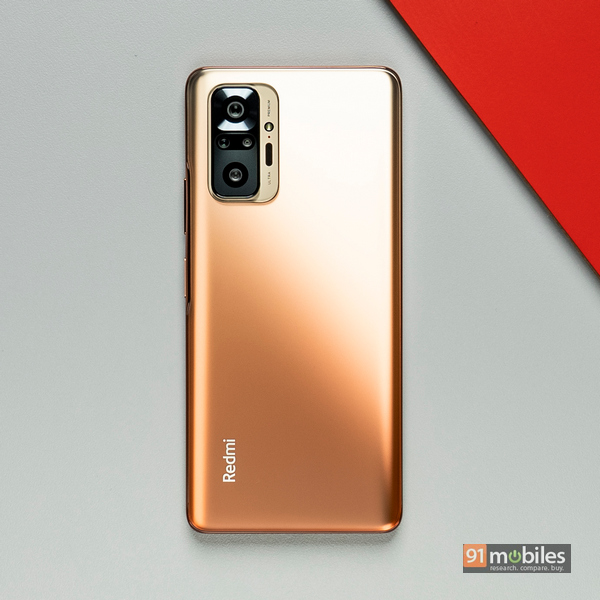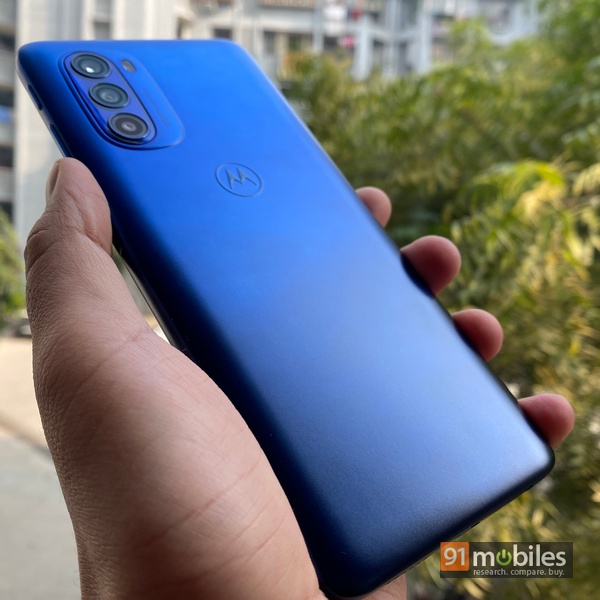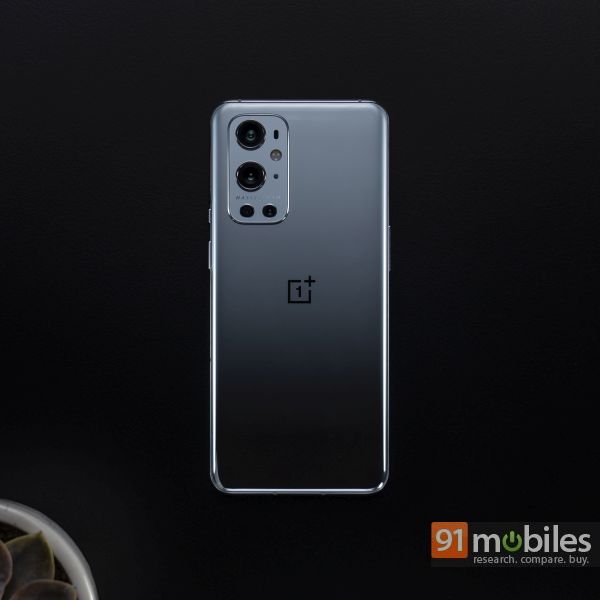Best 120Hz display phones 2022: iPhone 13 Pros, OnePlus 9 series, Redmi Note 10 Pro, and more | 91mobiles.com
120Hz displays refresh images 33 percent faster than a 90Hz screen, thus ensuring better animation and lesser motion-blur
We’re quickly moved from 90Hz display phones to the era of 120Hz display phones. Not just gaming phones, even mainstream smartphones these days are flaunting the high screen refresh rate that is rated to offer buttery-smooth scrolling, animation, and transitions. The list of 120Hz display phones is growing, with Samsung leading the pack, followed by OnePlus, Xiaomi, and Realme, among others. Not just Android phonemakers, even Apple has joined the bandwagon. Before we get down to the list, here’s a quick look at what the high 120Hz refresh rate tech brings to the table and how better it’s from 90Hz.
What is a 120Hz (or above) display?
In many premium models nowadays, 120Hz is the refresh rate at which the image redraws on the screen. It can render the image 120 times per second, which is 33 percent faster than what a 90Hz screen offers. While the difference between 120Hz and 90Hz screens is not easily perceivable with the naked eye, you’ll undoubtedly notice a difference if you’re upgrading from phones with, say, 60Hz refresh rate.
The high refresh rate makes the animations and content on the screen look and feel smooth and snappier, thus, improving the overall experience. You’ll love scrolling through the app drawer, images, web pages, and more on 120Hz display phones. It’s worth mentioning that the refresh rate is a hardware feature, compatible with only supported apps and videos. However, most games these days come with support for the high 120Hz refresh rate. That said, the high refresh rate requires a powerful chipset to keep up with the graphics frame rate and a beefy battery cell to ensure the 120Hz display phone lasts long.
The refresh rate should not be confused with its correlated metric, i.e. touch sample rate. The latter, also measured in Hz, is the speed at which a screen registers your touch and responds with the next set of renders in the animation. A higher-touch refresh rate means less lag between input (touch or swipe) and action. If the touch refresh rate and screen refresh rate are the same — say 60Hz or 90Hz, the animations will render in one interval. Apple’s iPhone 11 series phones, for instance, have a 60Hz refresh rate and 120Hz touch response rate.
List of 120Hz display phones
- Realme 8i
- Infinix Note 11S
- Redmi Note 10 Pro and Pro Max
- Moto G51 5G
- iQOO Z5
- Realme GT 5G series
- Mi 11X Pro
- Samsung Galaxy M52
- POCO F3 GT
- OnePlus 9 series
- ASUS ROG Phone 5
- Samsung Galaxy S21 series
- Samsung Galaxy Z Fold 3 and Flip 3
- Vivo X70 Pro and Pro Plus
- iPhone 13 Pro and Pro Max
1. Realme 8i
Realme 8i (review) is arguably the best 120Hz display phone for its price. The handset debuted in the country with the gaming-focused MediaTek Helio G96 chipset, which is aided by ARM Mali-G57 GPU. The Realme smartphone is available in 4GB + 64GB storage and 6GB RAM + 128GB storage options. The Realme 8i price in India starts at Rs 13,999.

Other specifications of the Realme 8i include a 6.6-inch FHD+ display, triple rear cameras with a 50MP primary sensor, a 5,000mAh battery, and 18W fast charging support. That said, it’s not a 5G phone. The handset packs 4G LTE connectivity along with dual-band Wi-Fi, Bluetooth 5.0, GPS/Glonass/ Galileo, and USB Type-C.
2. Infinix Note 11S
The Infinix Note 11S (review) comes with pretty much the same specifications as the Realme 8i and costs slightly less as well. The entry-level variant of the Infinix Note 11S, which is equipped with 6GB RAM and 64GB storage onboard, costs Rs 12,999 instead of Rs 13,999.

The Infinix Note 11S specifications are as follows: a 6.95-inch FHD+ display that bears a 120Hz refresh rate, MediaTek Helio G96 SoC, 50MP triple rear cameras, 5,000mAh battery, and 16MP selfie camera. Software-wise, the handset runs Android 11 based XOS 7.6 out of the box.
3. Redmi Note 10 Pro and 10 Pro Max
Redmi Note 10 Pro and Redmi Note 10 Pro Max (review) both marked the entry of Xiaomi’s Note-series offerings in high screen refresh rate phones space in India. The smartphones pack 120Hz refresh rate displays. They sport a 6.67-inch FHD+ AMOLED punch-hole panel and Snapdragon 732G SoCs under the hood. This is coupled with up to 8GB RAM and 128GB storage onboard.

For photography, the Redmi Note 10 Pro Max ships with 108MP quad rear cameras, whereas the Redmi Note 10 Pro employs 64MP quad cameras. That’s the only notable difference between the two phones, in terms of specs. As for the price, the Redmi Note 10 Pro costs Rs 15,999 for the base variant, while the Redmi Note 10 Pro will set you back to Rs 18,999.
Buy Redmi Note 10 Pro | Redmi Note 10 Pro Max
4. Moto G51 5G
For those looking for a phone with modern features at an affordable price stage, the Moto G51 5G (review) should fit the bill. The handset was recently launched in India, with a 7.7-inch IPS LCD display that bears FHD+ resolution and 120Hz refresh rate. It’s powered by the Snapdragon 480+ SoC, which may not be as powerful as the Redmi Note 10 Pros’ Snapdragon 732G SoC but has a 5G modem built-in.

As for the cameras, the Moto G51 5G rocks triple rear cameras that comprises 50MP primary sensor, an 8MP ultra-wide camera, and a 2MP macro-camera. Up front, it packs a 13MP shooter for selfies and video calling. The handset is driven by a 5,000mAh battery with a 20W fast charging support. What’s more? The Moto G51 5G runs a near-stock version of Android 11 and costs just Rs 14,999.
5. iQOO Z5
The iQOO Z5 (review) is a compelling value for money mid-ranger that cuts both ways. The handset is priced at Rs 23,990 for the 8GB+128GB model, while the 12GB+256GB version costs Rs 26,990. As for the specifications, the iQOO Z5 packs a 120Hz refresh rate screen that is 6.67-inch tall and bears FHD+ resolution. The handset has a 5G-capable Snapdragon 778G SoC ticking at its core and Android 11-based FunTouch OS 12 running out of the box.

In the camera department, there is a 64MP triple rear-camera setup, with an 8MP wide lens, and a 2MP macro sensor. For selfies and video calling, the iQOO Z5 relies on a 16MP snapper in the punch-hole setup up front. Other features include a built-in 3.5mm headphone jack, 5,000mAh battery, a side-mounted fingerprint scanner, and 44W fast charging support.
6. Realme GT 5G series
Realme announced three GT smartphones in 2021 and all three of them come with 120Hz refresh rate displays. The handsets, namely Realme GT 5G, Realme GT Neo 2 (review), and Realme GT Master Edition (review), are mid-range offerings that tout punch-hole design and Snapdragon SoCs ticking at their core. While the Realme GT 5G rocks the flagship Snapdragon 888 SoC, the Realme Neo 2 and GT Master Edition have Snapdragon Snapdragon 870 and Snapdragon 778 chipsets ticking at their core.

The Realme GT series offers triple cameras at the back, which consists of a 64MP primary sensor, 8MP ultra-wide, and a 2MP macro sensor. Up front, the Realme GT Master Edition sports a 32MP camera, whereas the Realme GT Neo 2 and GT 5G are equipped with 16MP snappers for selfies and video calling. The handsets also feature respectable batteries, 65W fast charging, and AMOLED displays with a 20:9 aspect ratio, FHD+ resolution, and up to 1300nits brightness. The Realme GT 5G series is priced in India starting at Rs 25,999.
Buy Realme GT 5G | Realme GT Neo 2 | Realme GT Master Edition
7. Samsung Galaxy M52
Samsung Galaxy M52 5G (review) is a good choice for those who want a less expensive alternative to the Galaxy A52s. The M52 is priced at just Rs 29,999, while its counterpart costs Rs 35,999. The phone is very similar to the A52s in a lot of ways. Both handsets pack Snapdragon 778G processor under the hood as well as support 5G.

The Galaxy M52 also rocks a 120Hz refresh rate 6.7-inch FHD+ (1080x2400pixels) Super AMOLED Infinity-O display. The handset has a triple camera setup at the back, which consists of a 64MP primary sensor, a 16MP ultra-wide sensor, and a 5MP depth sensor. The front camera gets a 32MP unit for selfies and video calling. The phone packs a 5,000mAh battery with 25W fast charging support, 128GB storage onboard, and 8GB RAM, among other things.
8. POCO F3 GT
POCO was among the first smartphone makers to break the barriers of 120Hz phones under Rs 20,000. The handsets (POCO X2 and X3) are still available in the market; however, the POCO F3 GT (review) is its most powerful 120Hz display phone in India yet. The handset is powered by the flagship MediaTek Dimensity 1200 SoC paired with up to 12GB RAM and 256GB storage configurations.

The handset sports a 6.67-inch AMOLED display with a centred punch-hole for the 16MP front camera. The rear cameras of the POCO F3 GT are as follows: 64MP primary sensor, 8MP ultrawide lens, and a 2MP macro unit. The phone has a whopping 5,065mAh battery with 67W charging speed to keep the lights on. Connectivity options include support for two SIM cards, dual-SIM 5G, dual-band Wi-Fi ac, Bluetooth v5.1, GPS, USB Type-C port, and an infrared emitter. Additionally, there is an in-display fingerprint scanner for security. The POCO F3 GT price in India starts at Rs 28,999.
9. Mi 11X and Mi 11X Pro
They are the affordable flagships from the brand, with top-of-the-line chipsets ticking at the core. The Mi 11X Pro (review) is powered by Snapdragon 888 SoC, whereas the Mi 11X (review) rocks the Snapdragon 870 chipset under the hood. This is mated with 120Hz displays to ensure you get a buttery smooth experience along with high-quality performance.

The Mi 11X Pro gets an impressive 108MP camera at the back, which is paired with an 8MP ultra-wide sensor and a 5MP macro sensor. The vanilla Mi 11X, in contrast, sports 48MP triple rear cameras with the same wide-angle and macro sensors as the Pro model. Up front, both smartphones sport a 20MP shooter for selfies and video calling. The Mi 11X and Mi 11X Pro are also driven by a 4,520mAh battery with support for 33W fast charging. The Mi 11X is priced starting at Rs 29,999, whereas the Mi 11X Pro costs Rs 39,999 for the base 8GB RAM and 128GB storage variant.
10. OnePlus 9 series
OnePlus has expanded the lineup of its 120Hz display phones with the all-new OnePlus 9 series. All three phones in the lineup, namely the OnePlus 9R, the OnePlus 9, and the OnePlus 9 Pro (review), come with the high refresh rate AMOLED displays. While the screen size and resolution of the OnePlus 9R and OnePlus 9 are the same at 6.55-inch with FHD+ resolution, the OnePlus 9 Pro sports a large 6.67-inch LTPO display that bears QHD+ resolution.

Additionally, the flagship OnePlus 9 and OnePlus 9 Pro both rock Snapdragon 888 SoC under the hood, 65W fast charging solution, Hasselblad cameras, and 4,500mAh battery with 65W fast charging solution. The OnePlus 9 also touts IP rating and 50W fast wireless charging. The OnePlus 9R, on the other hand, is powered by Snapdragon 870 SoC. The handset sports 48MP quad rear cameras and a 4,500mAh battery with 65W fast charging.
Buy OnePlus 9R | OnePlus 9 | OnePlus 9 Pro
11. ASUS ROG Phone 5
Speaking of gaming, there isn’t any mobile phone in India that comes remotely close to the ASUS ROG Phone 5 (hands-on). The gaming-focused smartphone is powered by Snapdragon 888 SoC and employs a 6.78-inch FHD+ AMOLED display with an even better 144Hz refresh rate than 120Hz. The handset runs on Android 11-based ROG UI custom skin on top and packs a large 6,000mAh battery with 65W fast-charging support.

The ASUS ROG Phone 5 specifications are also headlined by 64MP triple rear cameras, 24MP selfie camera, GameCool, the latest AirTrigger 5 technology, new AeroActive Cooler 5, dual front-facing speakers, multi-antenna Wi-Fi, and a quad-mic noise-canceling array. ASUS ROG Phone 5 price in India starts at Rs 49,999.
12. Samsung Galaxy S21 series
The Samsung Galaxy S21 (review) series also comes with a 120Hz refresh rate display, much like its predecessor. The vanilla Samsung Galaxy S21 sports the high refresh on a 6.2-inch FHD+ Infinity-O Dynamic AMOLED display, whereas the Samsung Galaxy S21+ and Samsung Galaxy S21 Ultra tout a 6.7-inch and 6.8-inch Infinity-O Dynamic AMOLED display respectively. The handsets are powered by Exynos 2100 SoC in India coupled with up to 16GB RAM + 512GB storage onboard.

The Galaxy S21, S21+, and S21 Ultra are equipped with a 4,000mAh, 4,800mAh, and 5,000mAh battery, respectively. As for the cameras, the Samsung Galaxy S21 and S21 Plus have triple cameras at the back with a 12MP primary camera with OIS, a 64MP telephoto lens with 3X hybrid optical zoom, and a 12MP ultra-wide angle sensor. The Ultra has quad-cameras at the back, consisting of a 108MP primary camera with OIS and a 10x optical “super” telephoto sensor, a 12MP ultra-wide-angle lens, and two 10MP lenses. The Samsung Galaxy S21 series is priced in India starting at Rs 69,999.
13. Samsung Galaxy Z Flip3 and Fold3
The new foldable smartphones from Samsung also come with 120Hz displays. The Samsung Galaxy Z Fold3 (review) has a tablet-sized 7.6-inch display that folds in half vertically and a 6.2-inch outer display. The latter bears HD+ resolution and a punch-hole for a 10MP selfie camera, whereas the 7.6-inch screen flaunts QXGA+ resolution and a 4MP under-display shooter. The Z Flip3 (review), on the other hand, ships with a 6.7-inch FHD+ display that shuts vertically. The secondary display of the phone is a mere 1.9-inch, which can be used to interact with notifications and other things.

Both foldable phones from Samsung are powered by Snapdragon 888 SoC and sports 12MP cameras at the back. The Samsung Galaxy Z Fold3, which comes with S Pen support as well, packs a 4,400mAh battery with 25W fast charging. The Z Flip3 has a slightly smaller battery, 3,300mAh to be exact, that fast charges at 15W. While the Fold 3 comes with a wallet-breaking price of Rs 1,49,999, the Samsung Galaxy Z Flip3 can be purchased for as low as Rs 84,999.
Buy Samsung Galaxy Z Flip3 | Galaxy Z Fold3
14. Vivo X70 Pro and X70 Pro Plus
These are the best Vivo smartphones with 120Hz refresh rate displays that you can buy in India right now. The Vivo X70 Pro (review) and X70 Pro Plus (review) both are flagship offerings from the brand. The Pro model rocks MediaTek Dimensity 1200 SoC, whereas the Pro Plus is powered by the Snapdragon 888 Plus chipset. The Plus variant also has an edge over the regular Pro model in the screen and cameras department. You get more screen real-estate and better resolution on the Vivo X70 Pro Plus, thanks to the 6.78-inch QHD+ display, along with a 50MP quad-camera setup at the back, which comprises a 48MP ultra-wide sensor, 12MP depth sensor, and 8MP periscope lens for 30x SuperZoom as well.

The Vivo X70 Pro, on the contrary, sports a 6.5-inch FHD+ display and 50MP quad rear cameras with an 8MP periscope lens, 12MP ultra-wide and 12MP depth sensors. The handsets pack 32MP cameras on the front and about 4,500mAh batteries with up to 55W fast charging support. The Vivo X70 Pro Plus 50W wireless fast charging and 10W wireless reverse charging as well. The Vivo X70 Pro and X70 Pro Plus prices in India start at Rs 46,990 and Rs 79,990 respectively.
Buy Vivo X70 Pro | Vivo X70 Pro Plus
15. iPhone 13 Pro and 13 Pro Max
It took its sweet time, but you finally have iPhones with 120Hz displays. Both the Pro variants of Apple’s latest flagship, the iPhone 13 series, ship with a variable refresh rate that can go from 10Hz to 120Hz, depending on your usage, to save battery. While the iPhone 13 Pro Max has a big 6.7-inch screen, hence, a bigger battery, the iPhone 13 Pro (review) sports a 6.1-inch display. All other specifications of the phones remain the same.

The iPhone 13 Pro and 13 Pro Max both rock A15 Bionic chipset under the hood, 12MP triple rear cameras, 12MP selfie camera, 20MP wired charging, iOS 15, and 15W MagSafe wireless charging along with 7.5W Qi Wireless charging. The handsets are priced in India starting at Rs 1,19,900.
For all the latest Technology News Click Here
For the latest news and updates, follow us on Google News.
